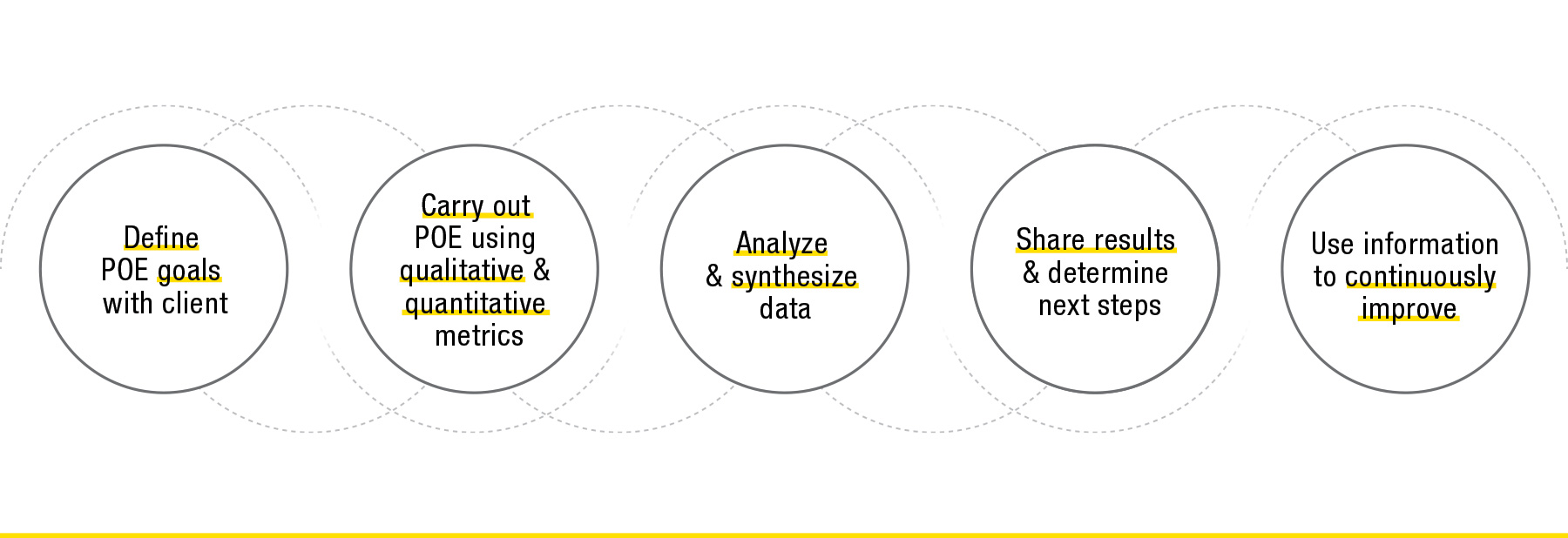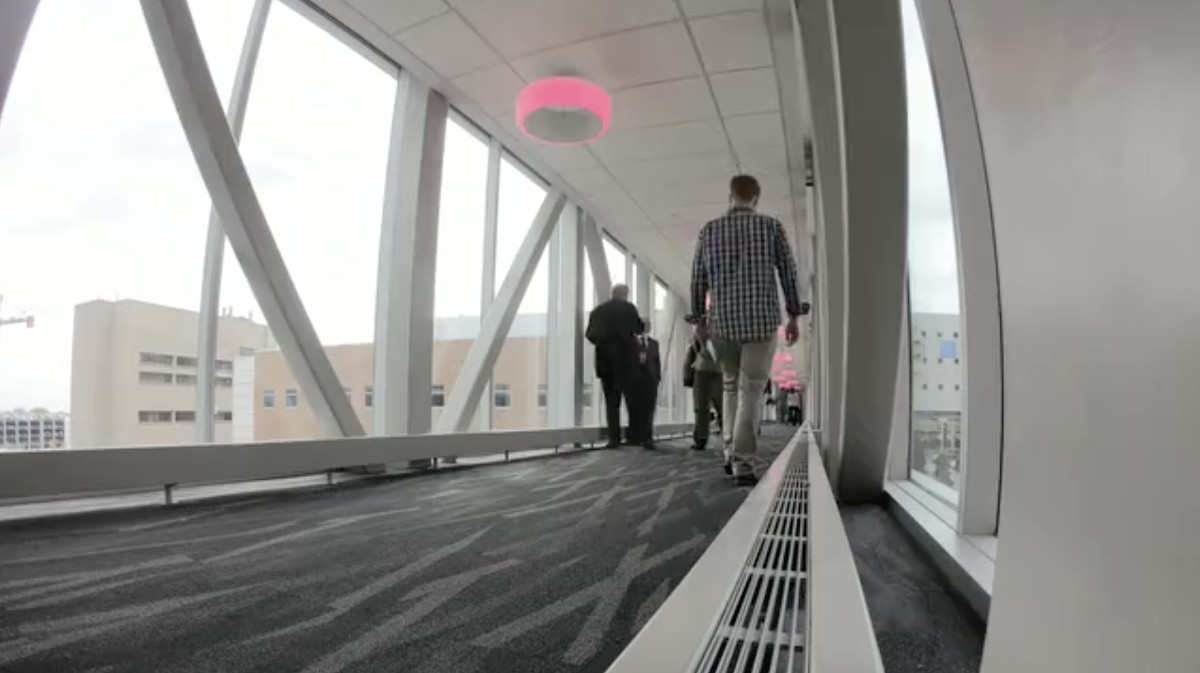
A Post-Occupancy Evaluation (POE) is a process of systematically and rigorously evaluating buildings after occupancy and providing feedback for improvement. The definition has broadened in recent years to incorporate current state, or "pre" building evaluations, to allow for effective comparison to post-occupancy data.
The optimal timeframe to conduct a pre-occupancy evaluation is any time before renovations commence or prior to moving into a new building. For post evaluations, we recommend conducting the study between six months and two years after occupancy, providing occupants with adequate time to get settled into the new space.
Although the steps and timeline of each POE will vary based on the organizational goals and level of data collected, the diagram below provides an overview of the key components involved in the process.
POE 411
A Post-Occupancy Evaluation (POE) is a process of systematically and rigorously evaluating buildings after occupancy and providing feedback for improvement. The definition has broadened in recent years to incorporate current state, or "pre" building evaluations, to allow for effective comparison to post-occupancy data.
The optimal timeframe to conduct a pre-occupancy evaluation is any time before renovations commence or prior to moving into a new building. For post evaluations, we recommend conducting the study between six months and two years after occupancy, providing occupants with adequate time to get settled into the new space.
Although the steps and timeline of each POE will vary based on the organizational goals and level of data collected, the diagram below provides an overview of the key components involved in the process.

We utilize a variety of data collection methods which are dependent on the goals of each post occupancy study and what information the client may be interested in. A thorough POE can provide insight into understanding a variety of space utilization metrics, including:
- Building capacity
- Peak days/times of use
- Changes to productivity or efficiency
- Satisfaction with building attributes and amenities
- Impacts of collaboration based on space design
Data collection methods may include existing data analysis (scheduling data, facility performance data, etc.), sensor/tracking technology, on-site observations and interviews, time-lapse videos, and/or electronic surveys, depending on the hypotheses to be studied.
Conducting a POE is a mutually beneficial activity that allows clients, building occupants, and firms to:
- Measure how well the building meets established guiding principles and overall project goals
- Promote a culture of continuous improvement and ongoing learning
- Inform and enhance future facility designs
- Foster a high level of engagement by hearing directly from building occupants

This time-lapse video from a recent POE helps visualize circulation patterns, impromptu encounters, and the volume of employees utilizing the connecting bridge.